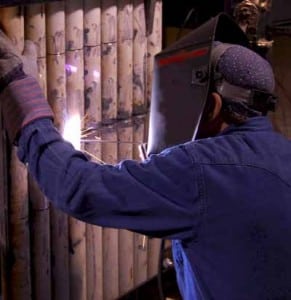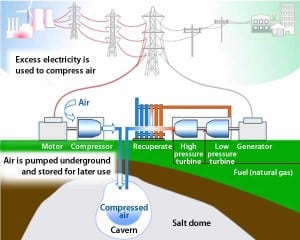Latest
-
News
RWE prepares to test CCS technologies at UK power plants
RWE npower has urged the UK government to address pitfalls in carbon capture and storage (CCS) regulation and policy that could prompt delays to vital investments. The company, which revealed it was close to completing a UK CCS facility, was responding to the government’s CCS consultation that closed last week. RWE npower, which supplies […]
-
News
First carbon dioxide emission permits auctioned in the U.S.
All 12.6 million allowances offered at the first U.S. carbon dioxide emissions auction sold on Sept. 25, 2008. The permits were bought by 59 participants from energy, financial, and environmental sectors at a clearing price of $3.07 per allowance, states participating in the Regional Greenhouse Gas Initiative (RGGI) said Monday. RGGI said on its […]
-
News
Entergy submits COL application for River Bend reactor
New Orleans-based Entergy Corp. on Thursday submitted a combined construction and operating license (COL) application to the U.S. Nuclear Regulatory Commission (NRC), selecting GE Hitachi Nuclear Energy’s next-generation ESBWR reactor design. Entergy, the nation’s second-largest nuclear plant operator, is seeking to reserve the option to build a potential new reactor at its River Bend […]
-
News
McCain, Obama supporters mostly agree on energy, climate change issues
A majority of supporters of John McCain and Barack Obama largely agree on how to deal with both the country’s energy needs and the problem of climate change, a new WorldPublicOpinion.org poll shows. WorldPublicOpinion.org, an international research project managed by the Program on International Policy Attitudes at the University of Maryland, surveyed 1,174 Americans […]
-
O&M
Anatomy of a Boiler Failure—A Different Perspective
The power industry’s operating and maintenance practices were held up to intense regulator and public scrutiny when on November 6, 2007, a Massachusetts power plant’s steam-generating boiler exploded and three men died.
-
O&M
The Low-Down on Low-Alloy Filler Metals
Chromium-molybdenum (chrome-moly) pipe has become a standard in the power generation industry, not only because of its corrosion resistance and high-temperature strength, but also for its cost-effectiveness. In many applications, it is a viable alternative to a more costly stainless steel pipe.
-
Coal
Who Cares about CAIR?
In a bid to preserve some of the health and air quality benefits of a defunct regulation, House Democrats have floated a legislative proposal to codify the near-term emission reductions required under the Bush administration’s Clean Air Interstate Rule, a regional cap-and-trade program for utility emissions that was thrown out in July by a federal appeals court.
-
O&M
Hill Backing New FERC Powers on Grid Cyber Attacks
Spurred on by a recent audit showing widespread utility noncompliance with voluntary recommendations meant to protect the grid from cyber attacks, key lawmakers have unveiled plans to give the Federal Energy Regulatory Commission (FERC) broad powers to enact new mandatory measures to close vulnerabilities in the U.S. bulk power system to potentially devastating computer-launched assaults.
-
Coal
Revived Energy Storage Technology Offers Major Grid Benefits
In a move that could boost the value of wind and nuclear generation, relieve stress on the nation’s transmission grid, and reduce utility carbon emissions, PSEG Global LLC and energy storage pioneer Michael Nakhamkin have announced that they have formed a joint venture to market and deploy “second generation” compressed air energy storage technology.
-
Commentary
Indecent Disclosure
Though former New York attorney general Eliot Spitzer may be remembered for one type of indecent exposure, the current New York attorney general is promoting a more damaging type of indecent exposure for coal-fired power plant owners.



